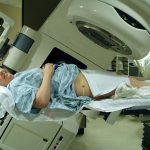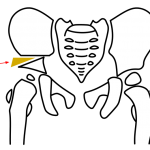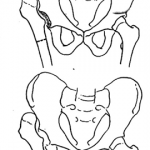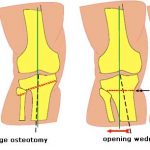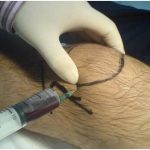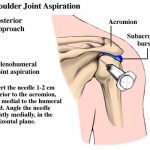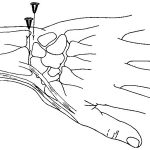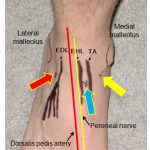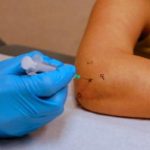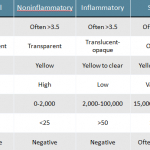Radiation therapy is a form of cancer treatment which uses high-energy radiation such as X-rays, gamma rays, and charged particles to shrink tumors and kill cancer cells. The radiation may be delivered by an external machine external-beam radiation therapy or by material placed in the body near cancer cells (internal radiation therapy, also called brachytherapy). […]
Procedures
Pelvic osteotomies – Indications and Types
Pelvic osteotomies are done to stabilize the hip and prevent early osteoarthritis in cases of acetabular dysplasia [Altered congruency of the acetabulum resulting from its maldevelopment]. The acetabulum is the large cup-shaped cavity on the anterolateral aspect of the pelvis that articulates with the femoral head to form the hip joint. Persistent acetabular dysplasia can lead […]
Proximal femoral Osteotomy
Proximal femoral osteotomy is a joint-sparing procedure that relies on maintaining the biologic integrity of the femoral head. Once common for hip dysplasia and arthritis of the hip, proximal femoral osteotomies are performed less commonly now. But they are still used in the treatment of hip fracture nonunions and malunions and in cases of congenital […]
Osteotomy Procedure and Indications
An osteotomy is a surgical procedure where the bone is cut to change its length or alignment. Often the procedure is done in an attempt to correct an abnormality that has resulted from trauma or disease. The procedure is able to correct the following deformities. valgus/varus angulation anterior/posterior angulation internal/external rotation lengthening/shortening medial/lateral shift dorsal/ventral […]
Knee Arthrocentesis or Knee Joint Aspiration
Knee arthrocentesis refers to puncture of the knee joint and the aspiration of its synovial fluid. It is used for synovial fluid analysis to aid in diagnosis and also for therapeutic purposes. Knee joint can be approached by multiple approaches [discussed below] Indications of Knee Arthrocentesis Diagnosis Acute monoarticular [that affects a single joint] arthritis […]
Shoulder Arthrocentesis Indications and Procedure
Shoulder arthrocentesis is the procedure of aspirating joint fluid from shoulder joint and like other arthrocentesis can have a diagnostic or therapeutic purpose. Shoulder joint or the glenohumeral joint can be approached anteriorly or by a posterior approach. The posterior approach allows the patient to be blinded from the procedure, and it mimics the approach used […]
Wrist Arthrocentesis – Indications and Procedure
Wrist arthrocentesis is the procedure of aspirating fluid from wrist joint and is used for diagnosis and therapy of various pathologies of the wrist. The wrist joint is anatomically complex and can be approached from any side but the dorsal approach is the preferred site for wrist arthrocentesis. Relevant Anatomy of Wrist Joint Indications of […]
Ankle Arthrocentesis or Ankle Joint Aspiration
Ankle arthrocentesis like other joint aspirations could be diagnostic or therapeutic. A good knowledge of ankle joint helps to perform the arthrocentesis more efficiently and safely. Relevant Anatomy of Ankle Joint The ankle joint is a hinged synovial joint formed by talar bone, tibia, and fibula. Plantar flexion and dorsiflexion are the main movements of […]
Elbow Arthrocentesis or Elbow Joint Aspiration
Elbow arthrocentesis refers to puncture of the elbow joint and the aspiration of its synovial fluid. It is used for synovial fluid analysis to aid in diagnosis and also for therapeutic purposes. Analysis of the removed fluid helps to reach at its etiology. Anatomy of Elbow Joint Elbow region is the connecting region between arm […]
Synovial Fluid Analysis And Interpretation
Synovial fluid analysis is often done to aid in the diagnosis of joint inflammation, pain, swelling, and/or fluid accumulation. It is withdrawn from the joint by a procedure called arthrocentesis. Synovial fluid is a thick, stringy fluid found in the cavities of synovial joints. It reduces friction between the articular cartilage and other tissues in […]
